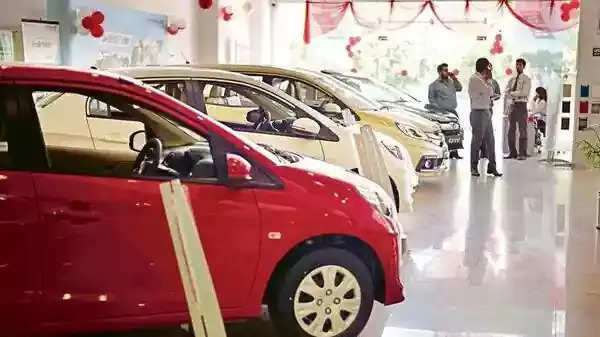
New Delhi: Vehicle sales which peak during the festive season in India account for about 40% of the annual business. Sales in the just-concluded season this year were better than that in the past two COVID-hit years, but the graph is far below the sales-mark of 2019.
As per industry estimates, starting from Navratri (Sept 26) till Diwali (Oct 24) this year, the passenger vehicle (PV) sales were up 45% to about 4 lakh cars, growing from about 2.75 lakh last year. However, when compared to the pre-COVID festive season, the numbers are still low.
During this one month long period, the country’s largest carmaker Maruti Suzuki delivered about 1.87 lakh cars, against about 1.30 lakh units during festivities last year. Currently, the carmaker has pending bookings of about 4.40 lakh units while for the entire industry it stands at about 8.25 lakh.
Shashank Srivastava, Sr Executive Officer- Marketing & Sales, Maruti Suzuki said, “This demand is actually an accumulation of pending bookings, which is because the production schedule during the past months was not as per plan.”
In India, the festivals drive sentiment buying and the three day auspicious period of Dhanteras, Choti Diwali and Badi Diwali garner major demand. This year, starting with Dhanteras on Oct 22 to Diwali on Oct 24, industry’s PV volumes are estimated at around 54,000 units, higher than the last two years but still lower than 70,000 units in 2019.
Maruti Suzuki delivered about 23,000 cars, against about 20,000 units last year. In 2019, this was at 30,000 units.
“So that’s like a 10% increase over last year, but still less than 2019-levels. That’s why I feel this year’s festive season was a mixed scenario. We are watching the situation,” said Srivastava.
During the three days, starting from Dhanteras to Diwali this year, the two wheeler industry registered about 3 lakh units. For the first 25 days of October, the total registrations stands at about 11.56 lakh units and it is expected to close at around 13 lakh for the month.
In October 2021, two wheeler registrations were about 10 lakh units for the month and in 2020, this was about 11 lakh. In 2019, the registrations peaked at 14.75 lakh units.
For November 2021, two wheeler registrations stood at 14.5 lakh units and in 2020 it was at 14.85 lakh units. In November 2019, it peaked at 18.24 lakh units, far from what is expected in November this year.
Nikunj Sanghi, industry veteran and managing director, JS Fourwheel Motor, said that compared to the past few months, the two wheeler segment saw some bounce back during this year’s festive season. However, the registrations were far from reaching the pre-pandemic levels in 2019.
According to him, one shall look at October and November together to gauge the actual demand scenario. This year, October has seen peak demand during the festive season compared to the last three years, when peak was seen in November.
In 2020 and 2021, Diwali was in the month of November which coincided with the marriage season demand and turned out to be the peak month for vehicle registrations. However, this year October registrations have already surpassed last year’s sales and we still have a week to go, so October has seen more demand than it is expected in the next month, which will only see marriage season demand, he said.
For 2019 when Diwali was in October, registrations peaked in November due to a lag between actual sales and retail sales being registered on the VAHAN portal. But now, the majority of Indian states are covered under VAHAN and sales are being registered within hours due to digital presence. Earlier, the time lag for registrations used to be 2-3 months during the festive months, which has now reduced to less than 2 hours.
Puneet Gupta, Director, S&P Global Mobility said, this festive season was really good in terms of wholesales for OEMs and dealers as the waiting periods on certain models have come down significantly. Since the cars were available, consumers got them delivered during festivals. Retail sales have also been good. The inventory in the network has come down to 25 days for cars, as against the average inventory rate of 45-50 days during last year’s festive seasons.
While some popular models still have a waiting period of 12 months across the country, the average waiting period in the system is around 3 months. Compared to the last 2-3 months, the sentiment for two wheelers has also bounced back and this festive season has been better, he said.
Outlook
Going forward, Srivastava of Maruti Suzuki belives there are many possible headwinds for the PV segment — inflation, liquidity, economic growth, high commodity prices, affordability factor. “However, I think once the production increases for specific models which have pending bookings, then we will get to know also the quality of these pending bookings.”
He remains certain of seeing record level wholesales for this year if the next 3-4 months witness normal production.
The January to March quarter is expected to be good for OEMs. Except a few factors, H1 2023 should also be good for the industry, the pressure is expected in Nov-Dec next year, said Gupta of S&P.
Also Read:
